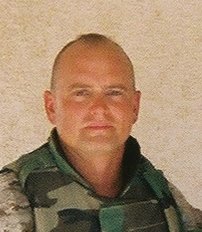It would be interesting to know why the strategies and tactics we learned prior to deploying to Iraq in early 2004, the very same ones that are achieving so much success now, were not being fully utilized from mid-2004 through 2006.
What happened then to impede the execution of sound counterinsurgency strategy and progress in Iraq? “Impeded” is the optimum word here, not “prevented.” Had none of the counterinsurgency actions been taking place, Iraq would have been far worse.
The success achieved in Tal Afar long before the New Way Forward and The Surge is a good example of leaders at subordinate levels doing well to implement known counterinsurgency strategies, despite any floundering taking place around them. Many a squad leader, platoon, company, battalion, or even regimental commander did well to move the process forward. They were the glue that held the country together for two and half years.
On the other hand, had full blown counterinsurgency strategies and tactics been implemented then as they are now, we likely would have seen the present success two years ago.
Questions and analysis of the disparity between what was known and trained for and what was directed is intended here in the military sense of after action improvement, the process by which we become better war fighters. (Sadly I concede that any attempt to question previous shortcomings in order to improve our military is likely to be spun into political fodder.)
For example, as a mobilized reserve Marine infantry battalion, we underwent 1st Marine Division’s whirlwind training regimen prior to deployment. We accomplished in 30 days what normally took place over the course of about 3 months.
That training included counterinsurgency tactics for unit leaders at all levels within the battalion, highlighted by a full blown, nearly week long exercise in SASO (Security and Stability Operations) aboard a large abandoned housing area at March Air Force Base, complete with an entire cadre of Iraqi role players and insurgents.
The training was led by those Marines who had been successful in the early parts of the Iraq war, others who were experts in counterinsurgencies, as well as British and Australian officers who had experience in this kind of fighting from other places in the world.
The package that General Mattis put together prepared us well for what lie ahead, including his motto “No Better Friend, No Worse Enemy” which summed up how we were to interact with the Iraqi’s and insurgents.
Within our battalion was also historical knowledge of previous counterinsurgency campaigns. The lessons of Vietnam, the Philippines, and even Lawrence of Arabia were not lost to us. In fact, much required reading and study had taken place long before our activation.
The deployment to Iraq started with our implementing what we’d studied and trained for. And we were successful. In fact, so much was being achieved during the early stages, eager young officers and NCOs were pulling to move quickly to the next levels and repeat the achievements of previous counterinsurgency operations.
Our outstanding young Marines were making it happen. It was an incredible opportunity to see them take all they’d been trained to do and execute it in a real world scenario. They were the Iraqi’s best friends and the worst enemy of all who stood in the way.
But then Fallujah happened in the spring of ’04. And then the money for reconstruction was held up and then re-released with burdensome strings attached. And then missions and directives from higher headquarters inconsistent with history and training started coming down. And the fight turned into something not completely consistent with what we’d trained to do.
It was not a derailed train, but it was slipping on the tracks instead of charging full speed ahead.
When speaking to others who were there from that time through 2006, much of the same is revealed in their experiences. They’ve shared many success stories, but some of similar frustrations as well. We could have always used more troops, but would numbers have mattered given the tactics and strategies being used?
None the less, the progress we made seemed to chug along at a pace not wholly inconsistent with the inherent difficulties of a counterinsurgency campaign.
But the last 12 months have given us something with which to compare the period from ’04 through ‘06.
With the success of The New Way Forward, The Surge, and the rapidity at which General Petraeus has changed the very face of the fight and the country, the comparison and hindsight show just how off-target from sound counterinsurgency strategy we were for two and half years. And we must beg the question “why?”
What happened then to impede the execution of sound counterinsurgency strategy and progress in Iraq? “Impeded” is the optimum word here, not “prevented.” Had none of the counterinsurgency actions been taking place, Iraq would have been far worse.
The success achieved in Tal Afar long before the New Way Forward and The Surge is a good example of leaders at subordinate levels doing well to implement known counterinsurgency strategies, despite any floundering taking place around them. Many a squad leader, platoon, company, battalion, or even regimental commander did well to move the process forward. They were the glue that held the country together for two and half years.
On the other hand, had full blown counterinsurgency strategies and tactics been implemented then as they are now, we likely would have seen the present success two years ago.
Questions and analysis of the disparity between what was known and trained for and what was directed is intended here in the military sense of after action improvement, the process by which we become better war fighters. (Sadly I concede that any attempt to question previous shortcomings in order to improve our military is likely to be spun into political fodder.)
For example, as a mobilized reserve Marine infantry battalion, we underwent 1st Marine Division’s whirlwind training regimen prior to deployment. We accomplished in 30 days what normally took place over the course of about 3 months.
That training included counterinsurgency tactics for unit leaders at all levels within the battalion, highlighted by a full blown, nearly week long exercise in SASO (Security and Stability Operations) aboard a large abandoned housing area at March Air Force Base, complete with an entire cadre of Iraqi role players and insurgents.
The training was led by those Marines who had been successful in the early parts of the Iraq war, others who were experts in counterinsurgencies, as well as British and Australian officers who had experience in this kind of fighting from other places in the world.
The package that General Mattis put together prepared us well for what lie ahead, including his motto “No Better Friend, No Worse Enemy” which summed up how we were to interact with the Iraqi’s and insurgents.
Within our battalion was also historical knowledge of previous counterinsurgency campaigns. The lessons of Vietnam, the Philippines, and even Lawrence of Arabia were not lost to us. In fact, much required reading and study had taken place long before our activation.
The deployment to Iraq started with our implementing what we’d studied and trained for. And we were successful. In fact, so much was being achieved during the early stages, eager young officers and NCOs were pulling to move quickly to the next levels and repeat the achievements of previous counterinsurgency operations.
Our outstanding young Marines were making it happen. It was an incredible opportunity to see them take all they’d been trained to do and execute it in a real world scenario. They were the Iraqi’s best friends and the worst enemy of all who stood in the way.
But then Fallujah happened in the spring of ’04. And then the money for reconstruction was held up and then re-released with burdensome strings attached. And then missions and directives from higher headquarters inconsistent with history and training started coming down. And the fight turned into something not completely consistent with what we’d trained to do.
It was not a derailed train, but it was slipping on the tracks instead of charging full speed ahead.
When speaking to others who were there from that time through 2006, much of the same is revealed in their experiences. They’ve shared many success stories, but some of similar frustrations as well. We could have always used more troops, but would numbers have mattered given the tactics and strategies being used?
None the less, the progress we made seemed to chug along at a pace not wholly inconsistent with the inherent difficulties of a counterinsurgency campaign.
But the last 12 months have given us something with which to compare the period from ’04 through ‘06.
With the success of The New Way Forward, The Surge, and the rapidity at which General Petraeus has changed the very face of the fight and the country, the comparison and hindsight show just how off-target from sound counterinsurgency strategy we were for two and half years. And we must beg the question “why?”





No comments:
Post a Comment